Unlike brush or trowel application, spraying allows a larger and more uniform amount of material to be deposited on the wood surface. Despite these advantages, there is one drawback that stops many from using this method of application. This is the formation of that cloud of fine varnish particles - overspray - which is not only a loss of material but also a source of other problems. One of them is gassing of the film formed.
Some of these varnish particles dry in the air and fall as dust onto the still liquid varnish film and get trapped in it. In the end the varnish will have an unpleasant, whitish appearance and a shaggy tinge. If the film formed is primer and not varnish, the defect is removed by sanding between layers. In the case of the final varnish layer, this can no longer be done and the effect is all the more dramatic the higher the gloss of the varnish (the more glossy the varnish).
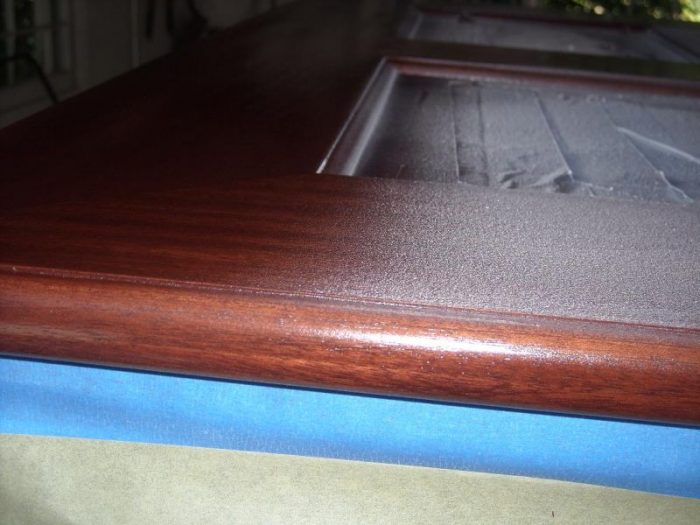
The speed at which varnish particles turn into dust depends on several factors. Firstly thinner used. If it is a fast volatile thinner the varnish powder will form faster. The choice of thinner is therefore also based on the ambient temperature and the use of very fast solvents (such as acetone) is not recommended when spraying varnishes.
Another influencing factor is the air pressure from the compressor. When the application is done by hand gun the air pressure is also adjusted manually. Often, out of a desire for better productivity (actually an illusion), there is a tendency to increase the pressure. This results primarily in increased overspray. It is better to have the pressure around 3 atm, maximum 4.
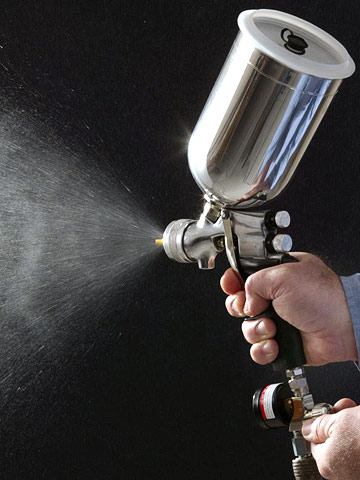
If there is a large volume of air with which the varnish is mixed, combined with a more rapidly volatile thinner, another phenomenon, very similar in appearance, occurs in addition to the varnish powder. Surface drying takes place before all the air in the film is out. As it tends to come out, it pushes into the formed lacquer flake and the appearance is very similar to that of dust falling on the lacquer film. In this case, lightly sanding the surface removes the surface layer and the small holes left in the air lacquer appear. To avoid this the air pressure should not be high and in the case of pumps the mixing ratio recommended by the manufacturer should be respected.
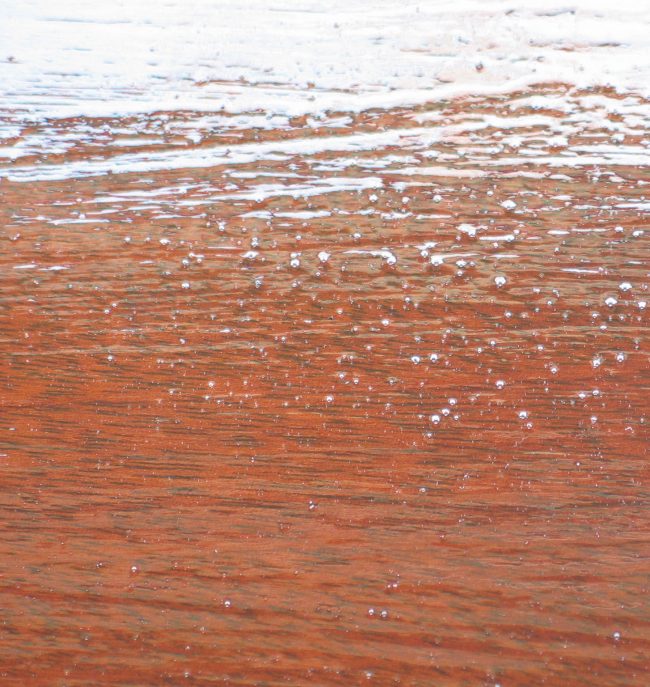
When spraying takes place in front of a fully functioning spray booth and the application is made starting from the area closest to the sprayer and furthest away from the booth, moving towards the side of the booth, the overspray will be picked up by the spray booth suction. In the case of dry filter booths, for good suction the filters should be shaken very often and changed when they clog.
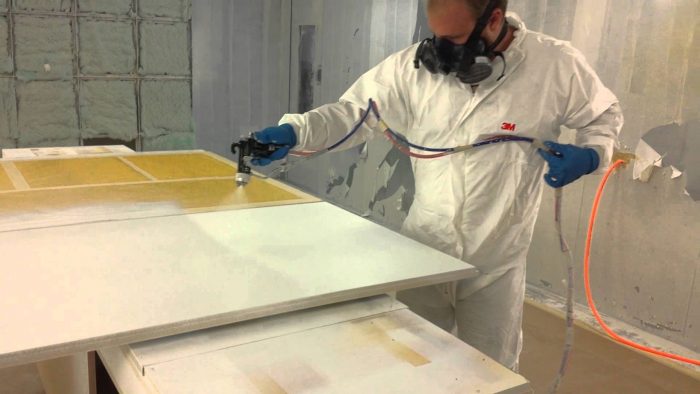
Applying varnish to closed areas of furniture (inside cupboards, drawer boxes) can lead to gassing. The resulting overspray cannot escape and is trapped in the film. The result is a whitish film that scratches you when you run your hand over it. It is avoided if the pieces are varnished without the back of the furniture being fitted.
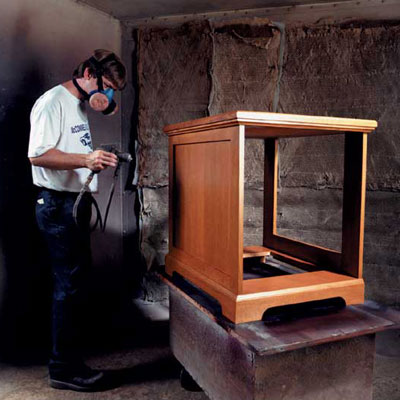
High temperature, lack of exhaustion, also influence the occurrence of gassing. Don't think that only solvent films are gassed. Water-soluble films also gasify. A high temperature in the workroom and high air pressure also cause the fine particles of water-soluble varnish to dry in the air and gasify the film. It is therefore important to give due importance to eliminating overspray and maintaining a constant temperature of 18-20 grd.C in the workroom.
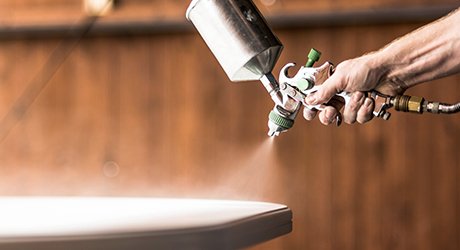


























Can you please tell me, for a solid wood, fir house, what is the best type of paint:
- lacquer, primer, sandolin
- brush, trowel or spray?
Thank you
Mihai
I would go for the coloured impregnating and varnish system. Varnish coat not too thick and by no means glossy. It is less resistant and takes away from the natural beauty of the wood. This system is more resistant over time (I repeat, if the varnish layer is not very thick). It is also possible with waxed impregnations. It has a more natural look, but is less durable. You can find more information here:
https://revistadinlemn.ro/2017/04/11/impregnanti-lacuri-lazuri-pentru-lemn/
You can use any of the 3 application methods:
- with the gun is faster and more uniform, but the losses are higher;
- with the brush there is a risk of leaving traces of brushing and it lasts longer;
- with the trafalet the application is done well and you have no losses. It depends on the wood. If it's rounded or with joints, it's harder to apply it all over.
Good luck and all the best!
Thank you for this article... As difficult as it may be I will still try to paint a wooden surface with a paint gun. I can adjust the pressure and the paint beam , so I hope to get a good paint job.
It's not hard at all. The important thing is to get started. Try before a wood, not directly on the furniture. Until you get the hang of it and understand how the gun works.
Good luck!
thanks for the advice